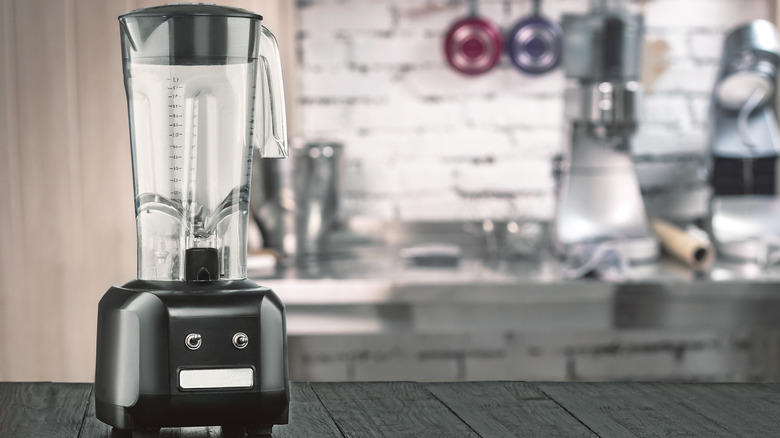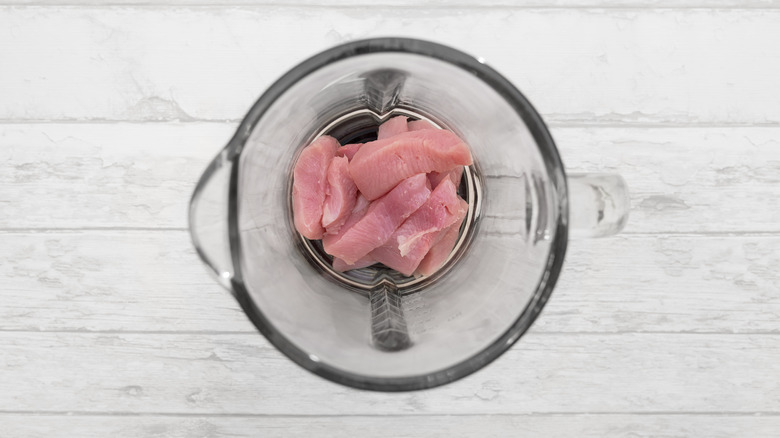Can You Put Meat With Bones In A Blender?
Thanks to the rise in technology, cooking at home has never been easier. There's often a tool you can buy that will allow you to cook and bake in any way that your heart desires. Among all of these amazing tools is the game-changing blender. Having been around for a century since 1922, the blender has allowed people to make a variety of blended foods, including smoothies, soups, sauces, salad dressings, milkshakes, and more (via Keystone Electronics Corp.).
Fast-forward to today, blenders now come in several shapes and sizes and perform multiple functions. Moreover, different brands of blenders contain a variety of blade sizes, noise shields, and even cordless and rechargeable capabilities, giving people even more control over how they use their machines.
Because of the wide versatility of the good ol' blender, we've had to look into some dos and don'ts over the years. That also includes the difference between a blender and a food processor, which hold different capabilities and should be used differently. The same goes for tossing an entire ginger knob into the blender, which we don't recommend unless you want fibrous ginger bits that won't break down completely.
But what about meat? If you're aiming to make a more meat-based sauce or grind it up to make meatballs, can you put the meat right in there with the bones and all?
Skip adding the bones with the meat in your next blend
Unless you want the possibility of bone fragments in your blender and food, then it's best to leave them out. While this seems like basic common sense, apparently, some people need to be reminded. Just like you wouldn't put any metal — yes, even a fork or a paperclip — into the electrical outlet, you should avoid putting meat with bones into your blender. According to Reader's Digest, Chef Andre Sickinger has seen some chefs carelessly put chicken or fish into a blender without double-checking for any little bones that may still be attached to the meat. If you're aiming for any form of blended or grounded meat for meatballs or paste, just make sure that there are no hard pieces of bone or cartilage remaining before putting the meat into your blender.
If you're looking to grind down some softer, smaller bones, a blender might not be the right tool here. You can carefully grind down thinner bones – like chicken ribs, wings, and neck bones – in a food processor as long as they are uncooked and cut into smaller pieces (via My Meat Grinders).

